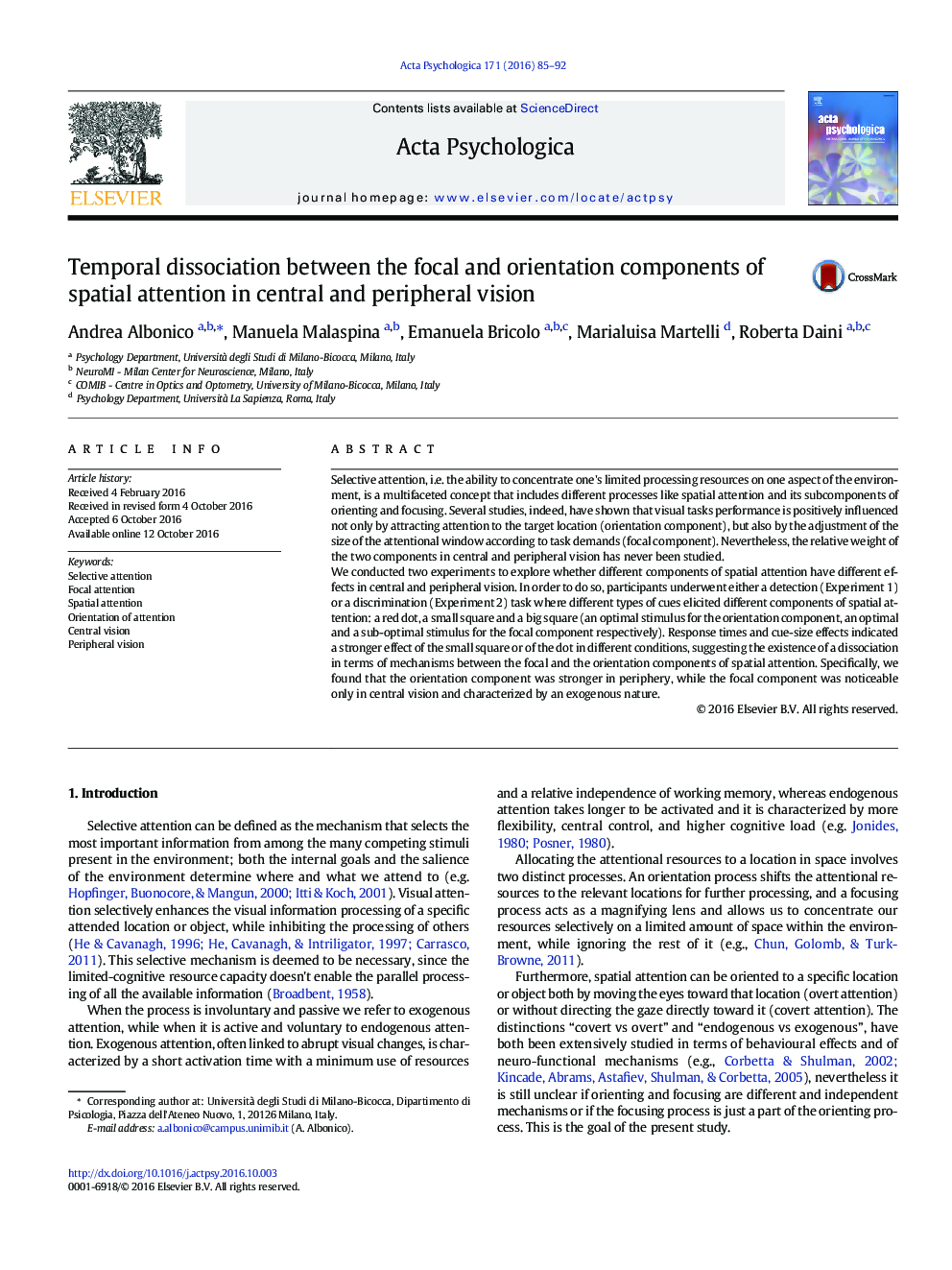| Article ID | Journal | Published Year | Pages | File Type |
|---|---|---|---|---|
| 5040283 | Acta Psychologica | 2016 | 8 Pages |
â¢We conducted a detection and a discrimination task in central and peripheral vision.â¢The effect of the orientation and focal components of spatial attention were tested.â¢The focal component was more robust in central vision and exogenous.â¢The orientation component was mainly endogenous and stronger in periphery.â¢These results reveal a dissociation between the two components of spatial attention.
Selective attention, i.e. the ability to concentrate one's limited processing resources on one aspect of the environment, is a multifaceted concept that includes different processes like spatial attention and its subcomponents of orienting and focusing. Several studies, indeed, have shown that visual tasks performance is positively influenced not only by attracting attention to the target location (orientation component), but also by the adjustment of the size of the attentional window according to task demands (focal component). Nevertheless, the relative weight of the two components in central and peripheral vision has never been studied.We conducted two experiments to explore whether different components of spatial attention have different effects in central and peripheral vision. In order to do so, participants underwent either a detection (Experiment 1) or a discrimination (Experiment 2) task where different types of cues elicited different components of spatial attention: a red dot, a small square and a big square (an optimal stimulus for the orientation component, an optimal and a sub-optimal stimulus for the focal component respectively). Response times and cue-size effects indicated a stronger effect of the small square or of the dot in different conditions, suggesting the existence of a dissociation in terms of mechanisms between the focal and the orientation components of spatial attention. Specifically, we found that the orientation component was stronger in periphery, while the focal component was noticeable only in central vision and characterized by an exogenous nature.
